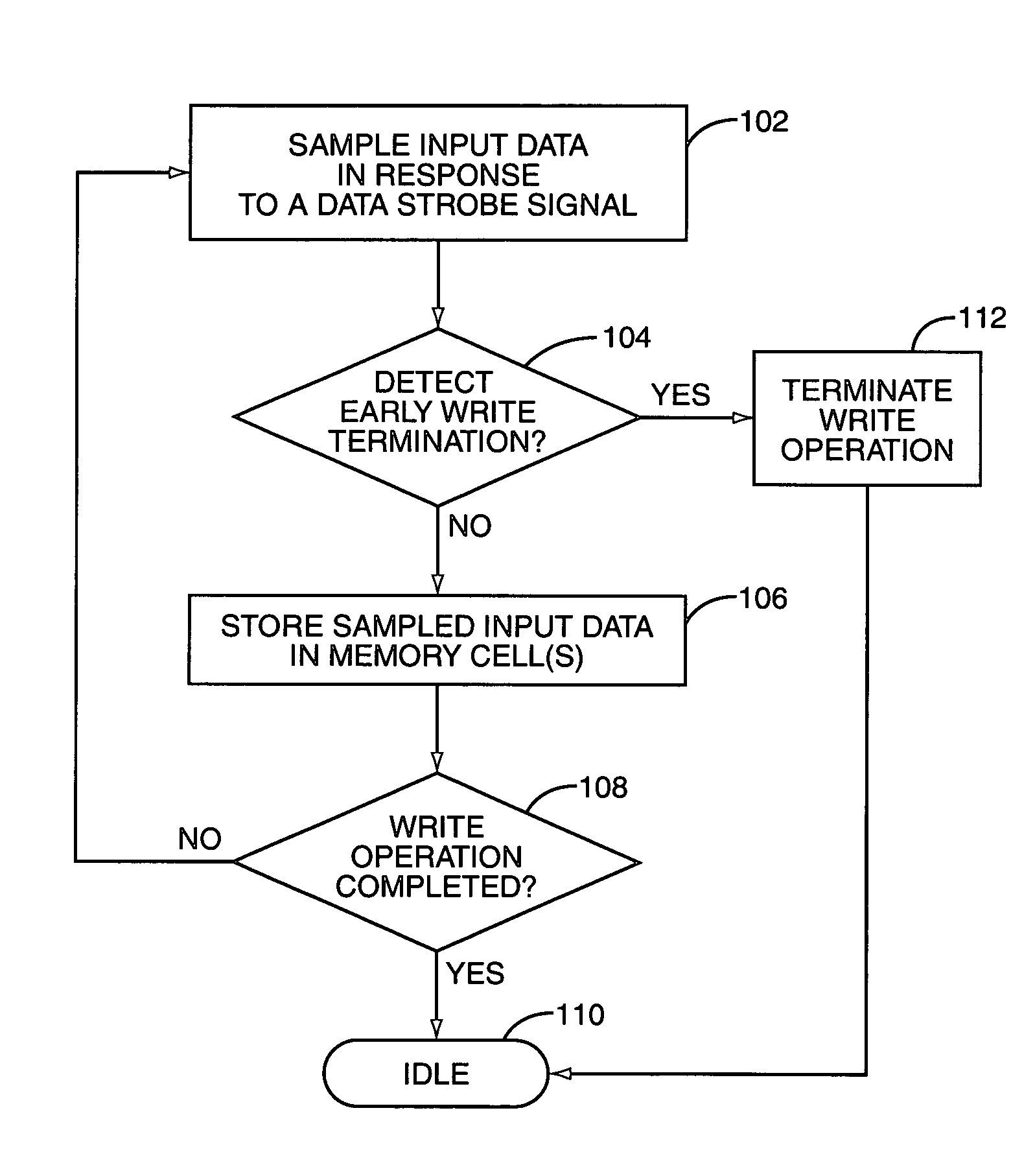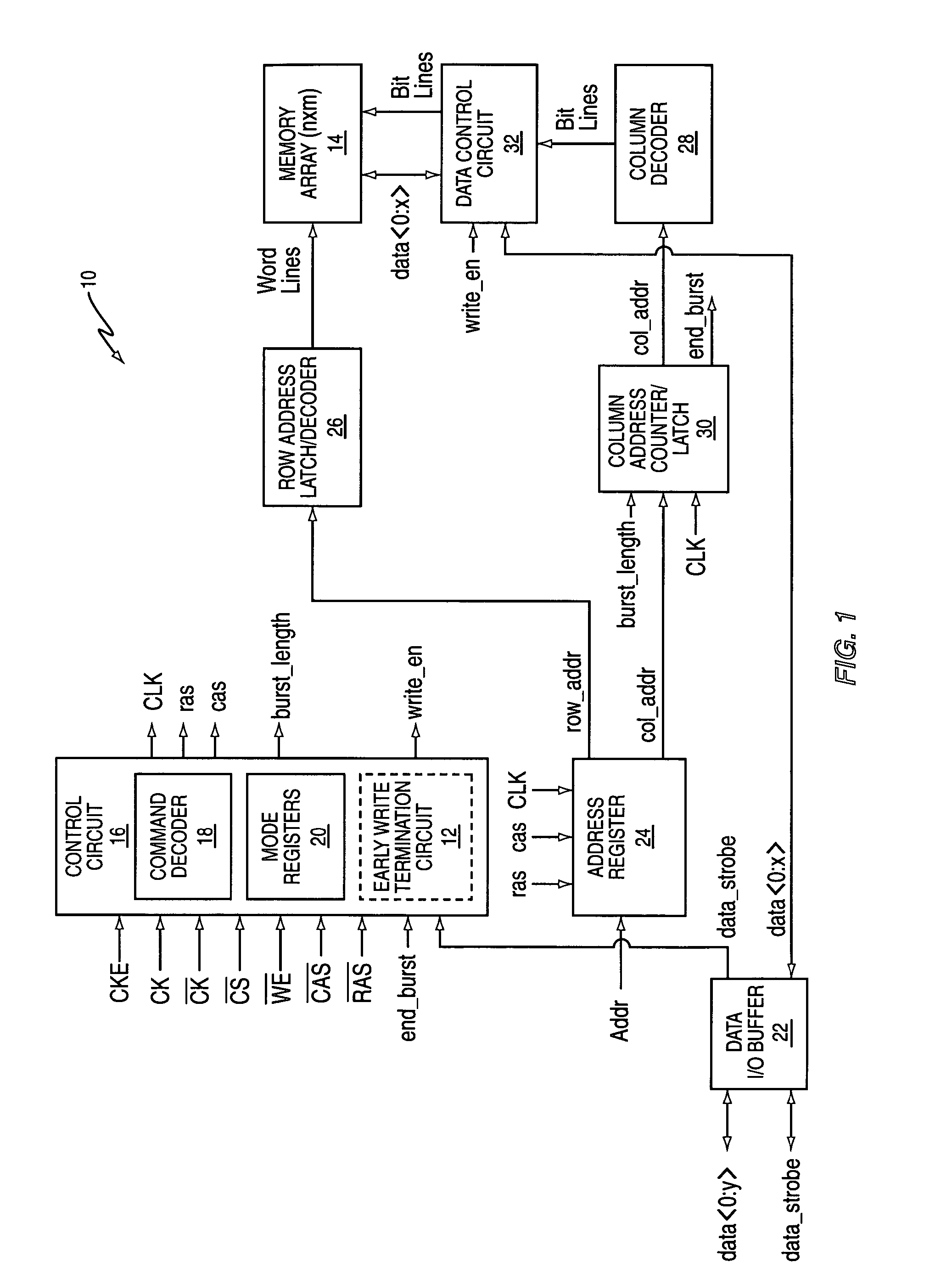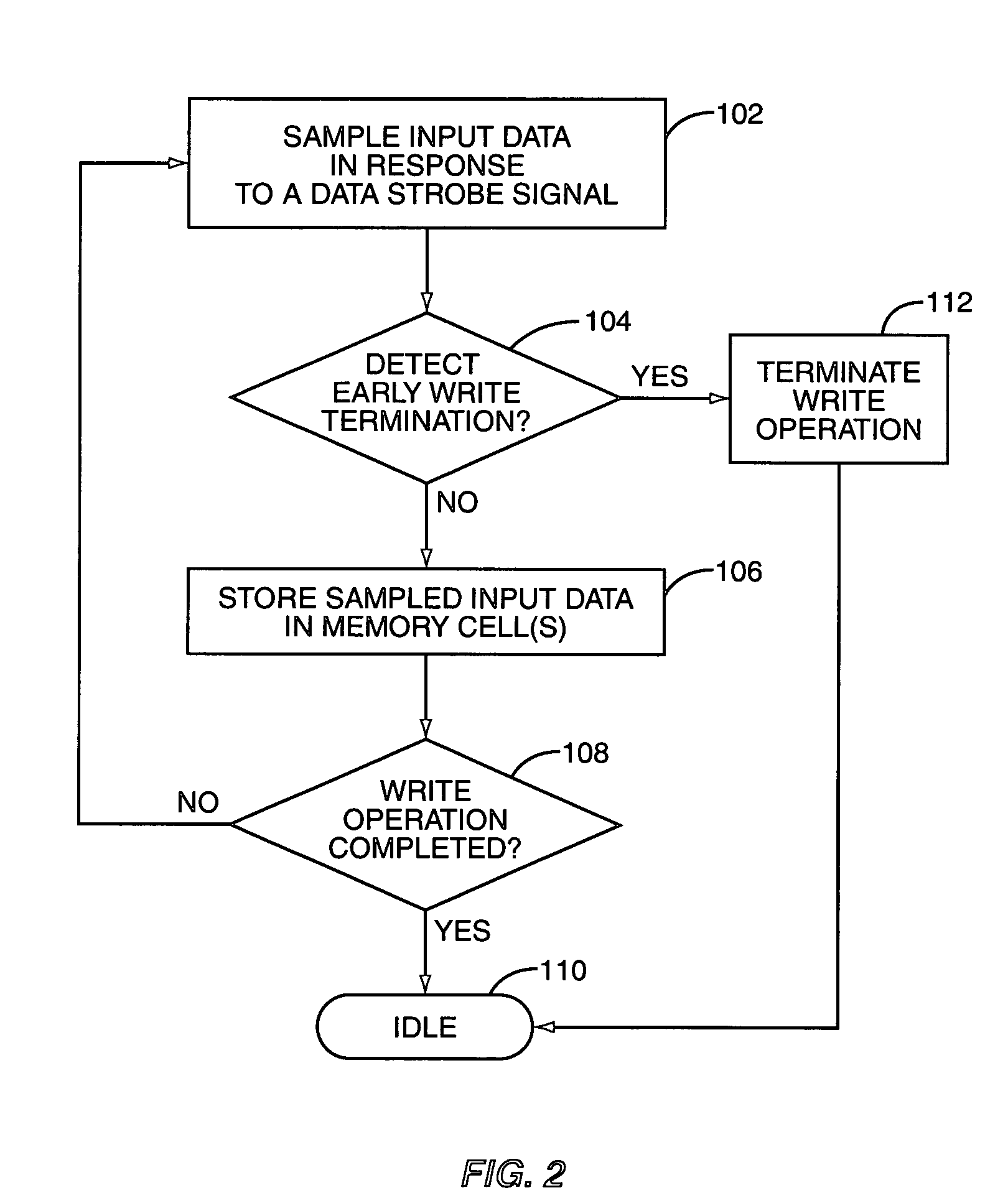Method and apparatus for early write termination in a semiconducutor memory
- Summary
- Abstract
- Description
- Claims
- Application Information
AI Technical Summary
Benefits of technology
Problems solved by technology
Method used
Image
Examples
Embodiment Construction
[0021] An embodiment of an SDRAM 10, shown in FIG. 1, includes an early write termination circuit 12. The early write termination circuit 12 terminates or truncates an ongoing memory write operation before its completion, e.g., at less than a programmed burst length. Particularly, in response to detecting deactivation of a data strobe signal (data_strobe), the early write termination circuit 12 disables or otherwise inhibits storing of input data in one or more memory cells of the SDRAM 10 during a write operation. As such, an ongoing write operation of the SDRAM 10 may be reliably terminated before the operation has been completed. Note that “write termination” as used herein means, in at least one embodiment, inhibiting access to all or part of the SDRAM's internal memory arrays 14. The SDRAM 10 may or may not continue to execute the write command, even though the early write termination circuit 12 has inhibited memory array access.
[0022] The SDRAM 10 of FIG. 1 includes one or mo...
PUM
 Login to view more
Login to view more Abstract
Description
Claims
Application Information
 Login to view more
Login to view more - R&D Engineer
- R&D Manager
- IP Professional
- Industry Leading Data Capabilities
- Powerful AI technology
- Patent DNA Extraction
Browse by: Latest US Patents, China's latest patents, Technical Efficacy Thesaurus, Application Domain, Technology Topic.
© 2024 PatSnap. All rights reserved.Legal|Privacy policy|Modern Slavery Act Transparency Statement|Sitemap



